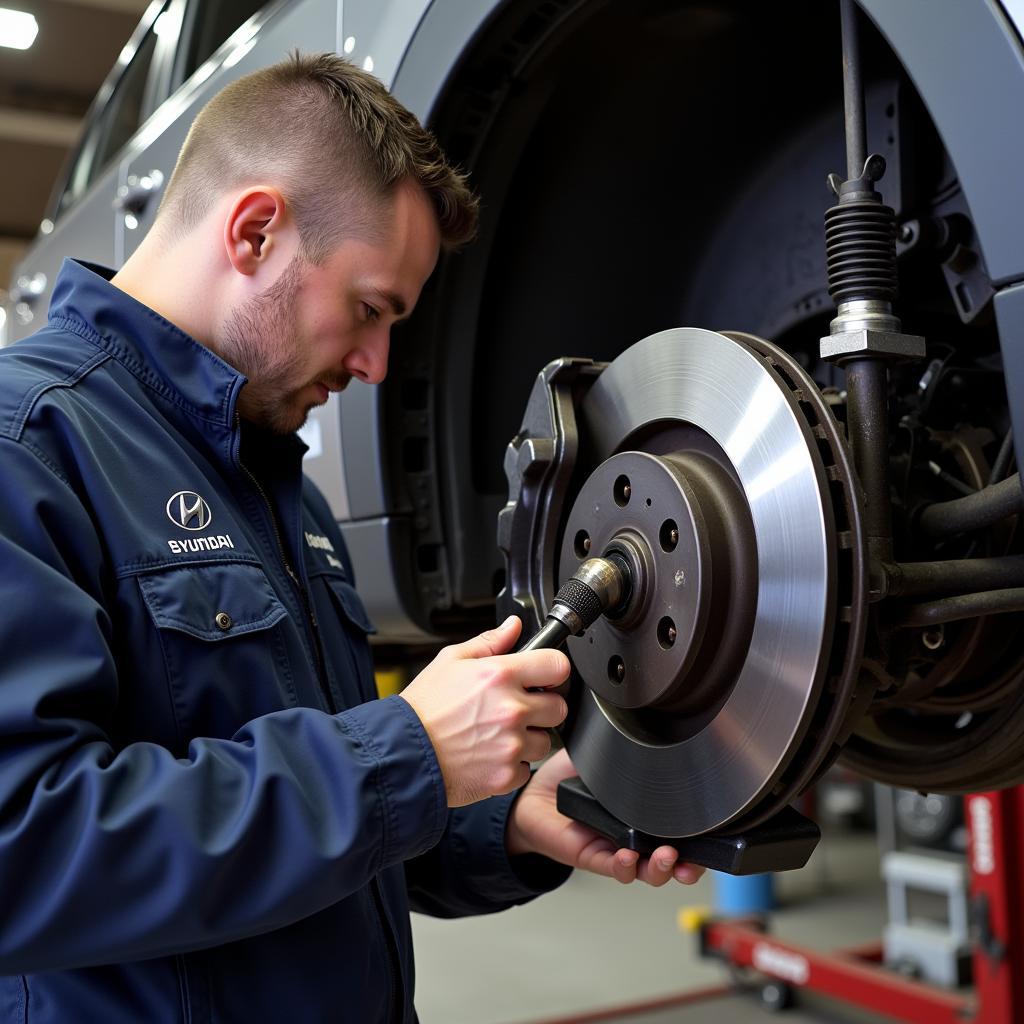Experiencing a glowing brake warning light on your dashboard can be unnerving. In a 2015 Hyundai Tucson, this usually indicates an issue with your braking system that requires attention. While it might not always signal a critical problem, it’s crucial to address it promptly to ensure your safety and prevent potential hazards on the road. This article delves into the common causes behind a 2015 Hyundai Tucson brake warning light, potential solutions, and when to seek professional help.
Common Culprits Behind the Warning Light
Several factors can trigger the brake warning light in your 2015 Hyundai Tucson. Here are some of the most frequent culprits:
-
Low Brake Fluid: This is one of the most common reasons. Brake fluid is the lifeblood of your braking system, transmitting force when you press the pedal. A leak or low fluid level can hinder this process, compromising your ability to brake effectively.
-
Worn Brake Pads: Like any component subject to wear and tear, brake pads thin out over time. When they reach a certain level of wear, a sensor triggers the warning light, signaling it’s time for a replacement.
-
Faulty Brake Light Switch: The brake light switch activates your brake lights when you depress the brake pedal. If this switch malfunctions, it can also trigger the brake warning light on your dashboard.
-
ABS Issue: Your Anti-lock Braking System (ABS) prevents wheel lockup during hard braking. If there’s a problem with the ABS system, the warning light might illuminate.
-
Parking Brake Engaged: It might seem obvious, but sometimes the simplest explanation is the most likely. If your parking brake is even slightly engaged, it can trigger the warning light.
Troubleshooting Your Brake Warning Light
Before heading to a mechanic, here are some initial checks you can perform:
-
Check Your Parking Brake: Ensure your parking brake is fully disengaged. Sometimes, even a slight engagement can trigger the warning light.
-
Inspect Your Brake Fluid: Carefully open the brake fluid reservoir under the hood. Check if the fluid level sits between the minimum and maximum marks.
- If the fluid is low: Add the recommended brake fluid for your 2015 Hyundai Tucson.
- If the fluid is significantly low or consistently dropping: This could indicate a leak, requiring immediate professional attention.
-
Examine Your Brake Lights: Have someone press the brake pedal while you observe the brake lights. If they aren’t functioning correctly, the brake light switch might need replacement.
When to Call in the Pros
If the above steps don’t resolve the issue, or you suspect a more complex problem, it’s crucial to consult a qualified mechanic specializing in Hyundai vehicles. Issues like ABS faults or intricate brake line leaks require specialized equipment and expertise for proper diagnosis and repair.
“Ignoring a brake warning light can lead to more extensive and costly repairs down the road. It’s always best to err on the side of caution and get your braking system checked by a professional if you notice any issues,” advises John Miller, a seasoned Hyundai mechanic with over 20 years of experience.
FAQs
Q: Can I drive my 2015 Hyundai Tucson with the brake warning light on?
A: It’s strongly discouraged. While you might be able to drive for a short distance, a glowing brake warning light indicates a potential problem with your braking system. Continuing to drive could be dangerous.
Q: How often should brake fluid be changed in a 2015 Hyundai Tucson?
A: Hyundai recommends replacing your brake fluid every 2 years or 24,000 miles, whichever comes first.
Q: How long can I drive on worn brake pads after the warning light comes on?
A: It’s not recommended to drive with worn brake pads. The remaining lifespan can vary depending on driving conditions and pad quality. Consult a mechanic immediately to assess their condition.
 Mechanic Inspecting Brake System of a 2015 Hyundai Tucson
Mechanic Inspecting Brake System of a 2015 Hyundai Tucson
Addressing Your Brake Warning Light: Safety First
The brake warning light in your 2015 Hyundai Tucson serves as an essential safety indicator. While simple checks can sometimes pinpoint the issue, seeking professional assistance ensures accurate diagnosis and repair, keeping you safe on the road.
